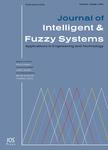版权所有:内蒙古大学图书馆 技术提供:维普资讯• 智图
内蒙古自治区呼和浩特市赛罕区大学西街235号 邮编: 010021

作者机构:Univ Engn & Technol Dept Comp Sci Taxila Pakistan Univ Engn & Technol Dept Comp Engn Taxila 47050 Pakistan Univ Engn & Technol Dept Software Engn Taxila Pakistan Univ Jeddah Coll Comp Sci & Engn Jeddah Saudi Arabia Umm Al Qura Univ Dept Comp Engn Mecca Saudi Arabia Prince Sultan Univ Artificial Intelligence & Data Analyt AIDA Lab CCIS Riyadh Saudi Arabia
出 版 物:《JOURNAL OF INTELLIGENT & FUZZY SYSTEMS》 (智能与模糊系统杂志)
年 卷 期:2021年第40卷第6期
页 面:10351-10371页
核心收录:
学科分类:12[管理学] 1201[管理学-管理科学与工程(可授管理学、工学学位)] 08[工学] 0812[工学-计算机科学与技术(可授工学、理学学位)]
主 题:Sparsely encoded features sDBSCAN clustering forensic analysis forgery detection
摘 要:With the help of powerful image editing software, various image modifications are possible which are known as image forgeries. Copy-move is the easiest way of image manipulation, wherein an area of the image is copied and replicated in the same image. The major reason for performing this forgery is to conceal undesirable contents of the image. Thus, means are required to unveil the presence of duplicated areas in an image. In this article, an effective and efficient approach for copy-move forgery detection (CMFD) is proposed, which is based on stationary wavelet transform (SWT), speeded-up robust features (SURF), and a novel scaled density-based spatial clustering of applications with noise (sDBSCAN) clustering. The SWT allows the SURF descriptor to extract only energy-rich features from the input image. The SURF features can detect the tampered regions even under post-processing attacks like contrast adjustment, scaling, and affine transformation on the images. On the extracted features, a novel scaled density-based spatial clustering of applications with noise (sDBSCAN) clustering algorithm is applied to detect forged regions with high accuracy as it can easily identify the clusters of arbitrary shapes and sizes and can filter the outliers. For performance evaluation, three publicly available datasets namely MICC-F220, MICC-F2000, and image manipulation dataset (IMD) are employed. The qualitative and quantitative analysis demonstrates that the proposed approach outperforms state-of-the-art CMFD approaches in the presence of different post-processing attacks.